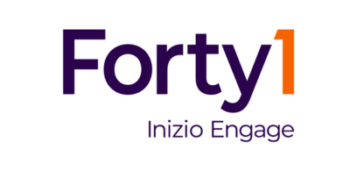Employee Belonging: Integrating DEI, Health, and Wellbeing for Truly Equitable Workplaces
 Luke-Matthew Iveson
Luke-Matthew Iveson In 2015, McKinsey found that companies in the top quartile for racial and ethnic diversity are 35 percent more likely to have financial returns above their respective national industry median and 15 percent more likely in the case of gender diversity. DEI is good for business, yet the gap between aspiration and reality remains significant. There is a palpable disconnect between DEI and wellbeing initiatives in supporting employees to feel a greater sense of belonging.
Employee belonging is an essential component for creating a truly equitable workplace where everyone feels valued and respected. It’s also essential for wellbeing and productivity. When employees experience a sense of belonging in the workplace, they are more likely to be engaged, productive, and have better mental and physical health.
Integrating DEI, health, and wellbeing is pivotal for fostering employee equity, yet it remains a mindset that many organisations are yet to fully embrace. The current landscape reveals a pressing need for leaders to reflect on this emerging trend, reassess their strategies, and proactively work towards embedding DEI principles into health and wellbeing programs.
The Reality Gap
Many organisations voice a commitment to DEI, yet their practical execution falls short. It’s not just a matter of representation; it’s about cultivating an environment where each employee feels valued and supported.
Beyond 2020, organisations committed to focusing on increasing ethnic diversity. However, many faced backlash for lack of authenticity in their actions. This approach of being ‘seen’ as doing something rather than making real, impactful change has led to many DEI efforts failing. The same is true for health and wellbeing initiatives.
‘Diversity, equity, and inclusion (DEI) are often treated as a single monolithic objective, rather than separate but mutually reinforcing sets of actions —with diversity and inclusion being necessary prerequisites to achieve equitable outcomes. DEI progress has traditionally been measured
based on activities and effort, often with little consideration for
actual outcomes achieved.’
– Deloitte, 2023
So, if DEI was good for business in 2015, why aren’t more organisations making an effort to integrate DEI, health, and wellbeing into the workplace in 2023?
The Interconnectedness of DEI, Health, and Wellbeing
Wellbeing is an intricate tapestry of elements, intertwining physical health, mental wellness, and a sense of purpose and belonging. At its heart, DEI accentuates our individual differences and unique journeys. Thus, discussing wellbeing without acknowledging these variances is an incomplete discussion.
For DEI efforts to truly resonate, there must be a genuine commitment to understanding and addressing the entirety of an individual’s experience. This means not only recognising diverse employee backgrounds but also the diverse ways in which individual employees experience workplace benefits and initiatives. Research by Gallup serves as a poignant reminder; the mere offering of certain benefits or initiatives doesn’t guarantee that they are perceived as equally valuable or accessible by all employees.
Gallup’s research brings to light the disparities in access to health and wellbeing resources. Providing benefits, while commendable, doesn’t equate to equal access. The stark differences among ethnic groups in their satisfaction with available, quality healthcare is a clear indicator. With 21% and 22% of Black and Hispanic employees, respectively, expressing dissatisfaction, compared to 13% of white employees, the disconnect is evident.
This difference highlights that a one-size-fits-all approach to wellbeing can inadvertently neglect the specific challenges different groups might face. These disparities can stem from a multitude of factors not limited to healthcare, but also in career growth opportunities, mentoring, training, and more.
DEI and wellbeing are two sides of the same coin. An organisation’s commitment to diversity and inclusivity should inherently recognise the diverse ways in which employees value and access benefits and opportunities.
By intertwining DEI with wellbeing, businesses can create a more holistic, inclusive approach that truly caters to the varied needs of their workforce. The essence is clear: to champion true inclusivity, businesses must ensure that their wellbeing strategies resonate equally across their diverse talent pool.
Bridging the Gap with Intention
There’s a clear difference between what many organisations say about DEI and wellbeing, and what they actually do. To implement real change, businesses need to first honestly assess their current efforts. What’s working? What isn’t? And most importantly, are they brave enough to face the answers?
Instead of treating DEI as a box to tick, organisations should see it as a core value that affects every part of the employee experience. This isn’t just about adding diversity to leadership or hosting events, it’s about making sure every employee feels included and valued every day.
By intentionally integrating DEI and wellbeing into employee engagement strategies, businesses not only drive a greater sense of belonging but also position themselves for greater success: better for people, better for business.
One example of this is the social app, Snapchat, which has taken steps to increase diversity in its workforce, particularly in tech roles. It is also mindful of how its products are accessible for people of different abilities and has implemented internal benefits and resources to support employees and their families who identify as persons with disabilities, have complicated medical conditions and situations, or want to access mental health coaching and short-term therapy.
Snapchats commitment to DE&I has been recognised as ‘DEI Best Place to Work for Disability Inclusion’ by both the American Association of People with Disabilities (AADP) and Disability:IN for two years in a row.
Another example is HSBC’s Mindfulness Network. Born out of a small initiative in Sheffield in 2011, it’s now a bank-wide community, tailored to reflect cultural dimension which has seen 10,000 employees participate in events run by its 80 mindfulness champions.
To make the leap from understanding the importance of DEI and wellbeing to genuinely integrating them into every facet of organisational life, businesses must act with clarity, purpose, and intention. It’s not enough to merely understand or acknowledge these principles–action is what brings them to life. To facilitate this, we’ve created four actionable pillars to guide organisations on this transformative journey:
Listen
Dive deep into the individual stories and backgrounds of your diverse talent pool. Understand the unique challenges and aspirations that various employee groups face. This step is about truly listening to the lived experiences of your workforce without judgment.
Learn
Cultivate a culture of openness where all employees, regardless of their background, feel empowered to share their experiences. Gather these insights to inform and refine your DEI-centric wellbeing plans. Understand that learning is an ongoing process, and the organisation must be nimble enough to adapt.
Lead
True leadership is not about dictating terms but rather about collaborating with those you serve. Involve employees from diverse backgrounds in co-creating DEI and wellbeing strategies. At the same time, leaders must be held accountable. Establish clear metrics to measure the success and impact of your integrated DEI and wellbeing initiatives to drive constant evolution and refinement.
Live
Make DEI and wellbeing an intrinsic part of the organisational DNA; it shouldn’t be a one-off initiative, it should permeate every aspect of the employee experience. From recruitment strategies and team-building activities, to day-to-day operations and company policies, ensure the principles of DEI and holistic wellbeing are deeply embedded and lived out daily.
The Future of Integrated DEI and Wellbeing
A linear approach to initiatives like DEI or wellbeing no longer works. A successful future needs organisations to see DEI and wellbeing not as isolated priorities, but as integral components of a broader, holistic strategy.
For many forward-thinking organisations, the challenge will be dismantling existing silos. These structures, which have traditionally kept DEI, health, and wellbeing as separate entities, are no longer tenable in a world that recognises their interdependence. To truly foster equitable workplaces, companies must use DEI and wellbeing as dual lenses through which the entire employee experience is evaluated and refined.
This evolution positions DEI and wellbeing at the very core of the organisational framework. It’s about transcending the checkbox mentality and authentically integrating these principles into recruitment, training, performance evaluations, employee benefits, team collaboration, and more.
As businesses navigate this transition, the anticipated outcome is clear: every individual, irrespective of their background, will feel authentically valued, supported, and equipped to thrive both personally and professionally. In essence, integrated DEI and wellbeing isn’t just the future; they are the natural evolution of modern workplaces prioritising genuine inclusivity and holistic wellbeing.
Next Article
 Luke-Matthew Iveson
Luke-Matthew Iveson
Gotta Catch ‘Em All: What Pokémon can teach us about Diversity, Equity and Inclusion
Whilst it’s true that we hear about diversity, equity and inclusion often, do organisations really understand what...
Read more Luke-Matthew Iveson
Luke-Matthew Iveson
Diversity, Equity, and Inclusion: From the Inside Out
Imagine you’ve been invited to a party. No one talks to you, you don’t get asked to dance and you find out you were...
Read more Laura Hunt
Laura Hunt
Money isn’t everything
What your organisation can do (beyond salaries) to help employees during the cost-of-living crisis. Your favourite pack...
Read more Rani Khalon
Rani Khalon
DEI needs are changing. Why are organisations stuck in 2020?
As a global employee engagement consultancy, we have been observing closely as employee sentiments, expectations and...
Read more Luke-Matthew Iveson
Luke-Matthew Iveson
Affinity Celebrations Series: Why You Should Care
Read more
